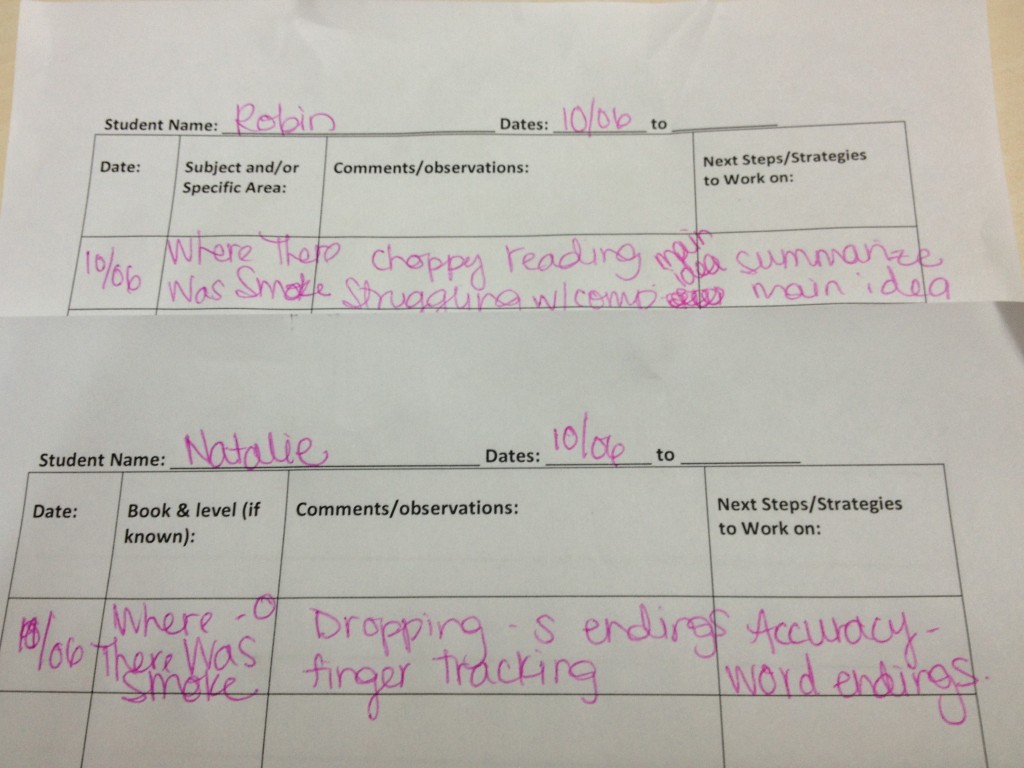This post is part of a four-post series with information related to our Primary Guided Reading Workshop conducted on October 6, 2015.
See related posts: Insights on Guided Reading, Elements of a Guided Reading Lesson, Questions and Concerns
As part of last Tuesday’s Guided Reading Workshop, I modeled a guided reading lesson. Here is an explanation of my thinking as I planned the lesson according to the Elements of a Guided Reading Lesson. At the end of this post is a video of the modeled lesson.
Selecting the Text
In selecting the text, I looked for a book at my students’ instructional level that would appeal to readers and offer them a few reading challenges to overcome in order to expand their reading power. I chose the book Where There Was Smoke about the USDA Forest Service’s creation of Smokey Bear to raise awareness about forest fires. I read the book with my readers in mind. I picked the strategic actions of identifying problem and solution (Thinking Within the Text) and inferring whether or not the solution worked (Thinking Beyond the Text). These are the two strategic actions that I wanted my group of students – who struggle with comprehension – to master during the guided reading lesson.
Introducing the Text
There are many ways to introduce a text but in planning my text introduction, I considered my students and chose my teaching moves strategically. In my introduction, I connected to students’ background knowledge on forest fires and introduced the USDA Forest Service since my Colombian students would be unfamiliar with that organization. I only introduced two essential words – embers and prevention – and left other new words for my students to figure out during their reading of the text. I reminded myself that this level of text was just above my students’ independent reading level, so I planned to scaffold enough in my introduction to help them be successful but left questions and challenges for them to figure out themselves.
I also stated the goal for the students and gave it a context and purpose in my introduction. This comes more from GANAG lessons and Sheltered Instruction than Fountas and Pinnell.
Reading the Text
Students read the text independently since the goal of guided reading is to build independence and autonomous problem-solving. As they read, I conferred with students focusing on their individual needs based on data from previous observations, running records, and anecdotal notes. I kept track of my conferences and new observations via anecdotal notes (template here).
Discussing the Text and Teaching for Strategic Actions
For these last two elements of the guided reading lesson, I planned to ask students “What was the problem in the story? What was the solution? and How do you know?” My goal during the discussion is to get students to do as much of the talking and thinking as possible. So, I would first have them turn and discuss their answers with a partner and then socialize their responses with the group using cold calls. After sharing the answers and using questioning or prompting to return to the text to solve any misconceptions, I planned to ask “Do you think the solution worked? And how do you know?” to get students to infer and think beyond the text. I would finish by having students somehow reflect on what they learned as readers during the guided reading lesson. I like to use this What I’ve Learned About Reading log for students to keep track of their learning. They can fill it out independently as one of their reading jobs if there is not enough time at the guided reading table.
You won’t see these last two elements in the video because we ended up breaking into a question-answer session in the workshop.
Here is the sample lesson:

February 22, 2021 at 10:27 pm
thank you very much!
sudoku 247